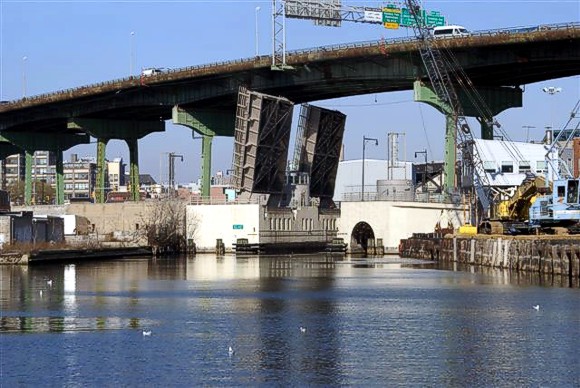Ten Companies Agree to Final Phase of Toxic Cleanup of New Jersey Industrial Waste Site
 May 23, 2014
May 23, 2014  Kyriaki (Sandy) Venetis
Kyriaki (Sandy) Venetis Ten companies have reached an agreement with the U.S. Environmental Protection Agency for the final phase of a $1.4 million cleanup of the Evor Phillips Leasing Co. Superfund site in Old Bridge Township, NJ. The New Jersey District Court approved the proposal earlier this month.
 Evor Phillips Leasing Co. Superfund site in Old Bridge Township, NJ. Photo courtesy of dredgingtoday.com.
Evor Phillips Leasing Co. Superfund site in Old Bridge Township, NJ. Photo courtesy of dredgingtoday.com.The site is an unoccupied six-acre plot of land located about one mile west of Route 9 and about 1.5 miles northeast of Route 18. The groundwater beneath the six-acre site is contaminated with volatile organic compounds (VOCs) from past industrial activities. The soil is also contaminated with VOCs and metals.
The EPA warns that direct contact with the soil, or accidentally ingesting of contaminated soil or groundwater could create serious health issues, including cancer.
The extent and nature of the potential health effects depends on factors including the level and length of exposure to the pollution, said the agency.
Municipal well data has confirmed the presence of site-related contaminants in the groundwater with leaching occurring into the underlying aquifer, which is a source of drinking water.
Among the most at risk are the Sayreville municipal wellfield located about 1,000 feet southwest of the site, and the Perth Amboy wellfield located about 3,000 feet southwest of the site. “All nearby residents have discontinued use of private wells and are now served by a municipal water supply,” said the EPA.

